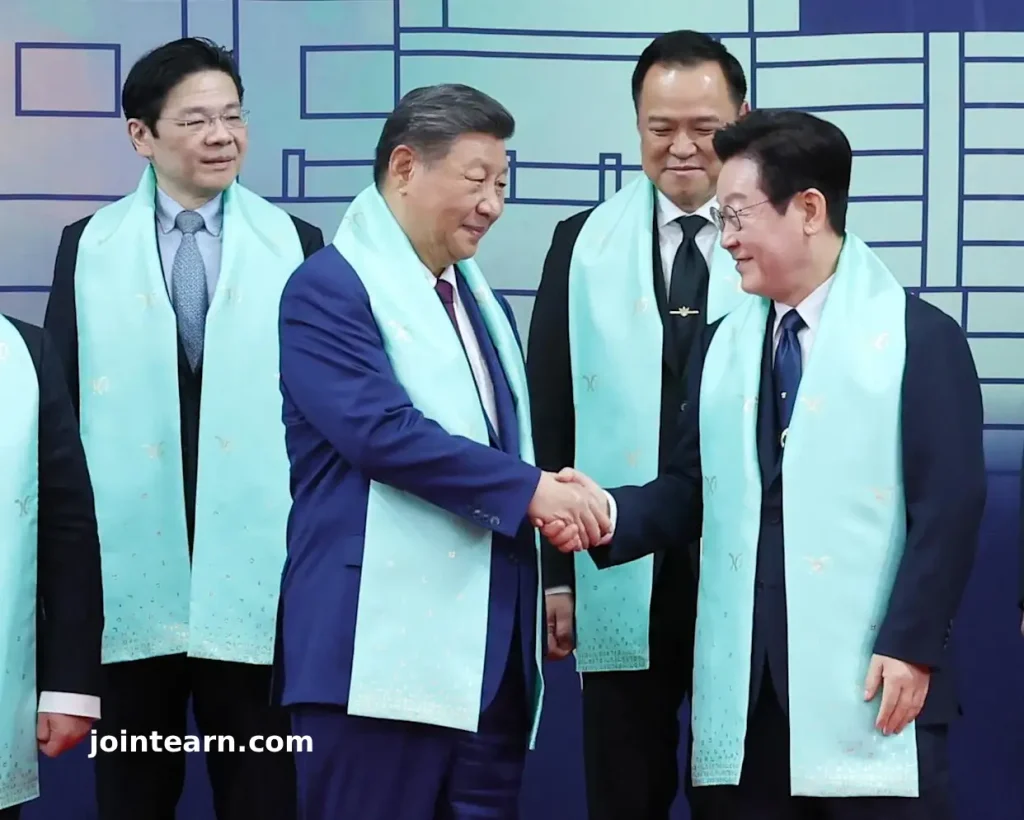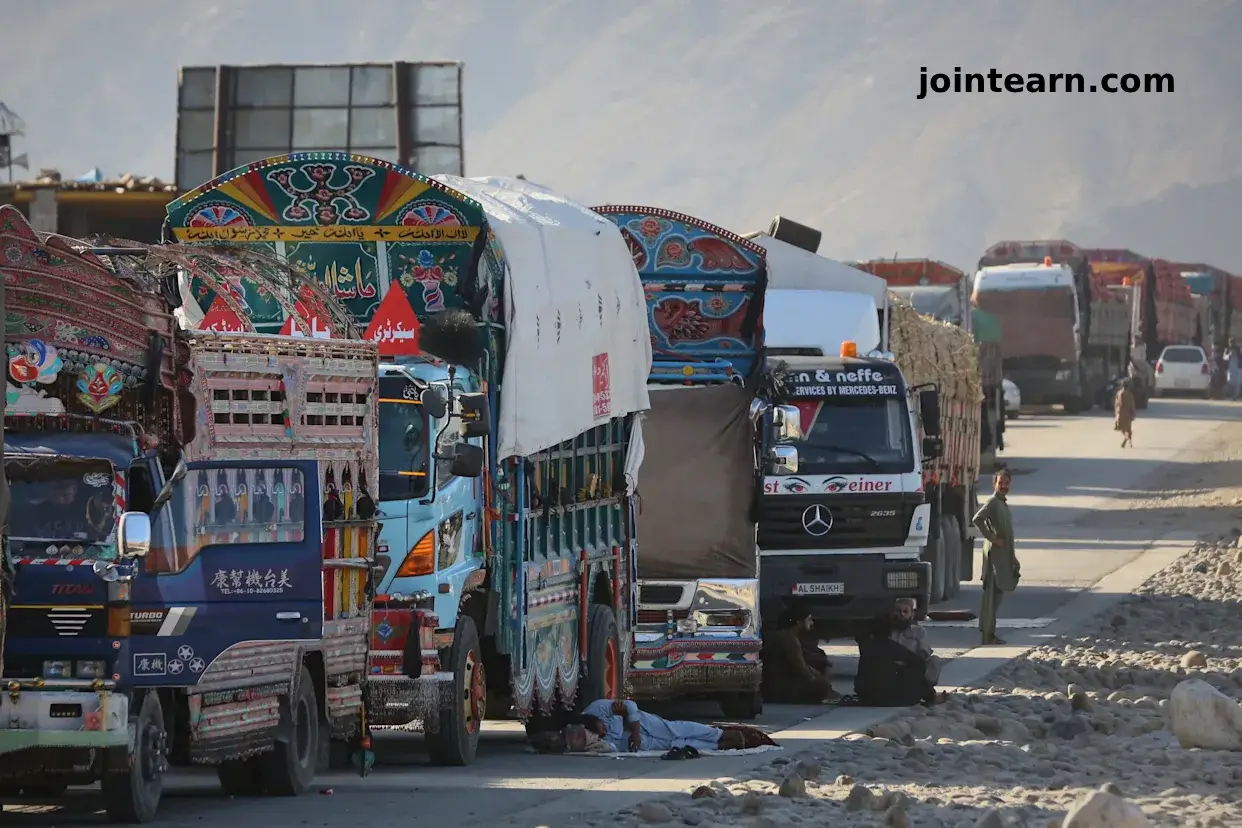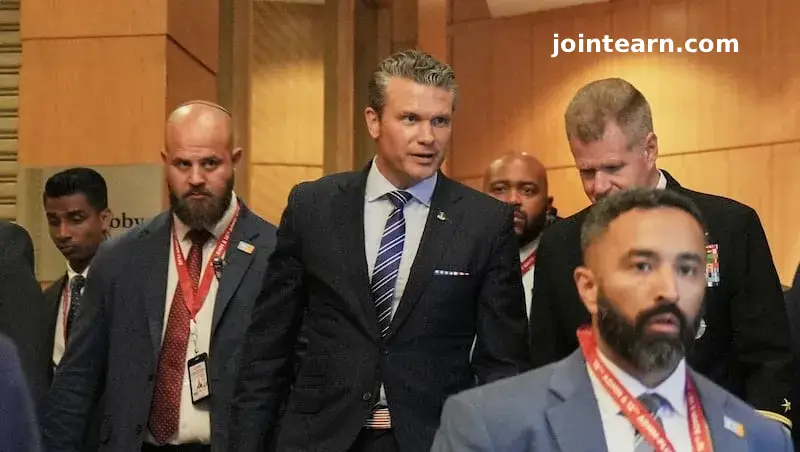
As global leaders wrapped up the Asia-Pacific Economic Cooperation (APEC) summit in Gyeongju, South Korea, the absence of U.S. President Donald Trump opened up space for China’s president, Xi Jinping, to take center stage. With 21 members representing nearly 40% of the world’s population and half of its global trade, the 2025 APEC summit became a defining moment for regional diplomacy and economic alignment in the wake of major U.S.-China and Canada-China developments.
Xi Jinping Seizes Leadership Spotlight at APEC
Following a whirlwind week of diplomacy across Malaysia, Japan, and South Korea, Xi Jinping emerged as the dominant figure at APEC 2025. With Trump heading back to the U.S. after punching key trade deals, Xi effectively filled the leadership vacuum. In a stark contrast to the protectionist tone of Trump’s “America First” policies, Xi championed multilateral cooperation and free trade—aiming to position China as a stabilizing force in an increasingly divided global economy.
Even as the U.S. president enjoyed ceremonial accolades during his Asian tour, it was Xi who captured the headlines when the main summit commenced. While Trump was busy handing out Halloween treats back at the White House, Xi was hosting high-level meetings with fellow world leaders.
APEC Summit Faces Fractures Over Trade and Multilateralism
Despite being anchored in a mission to foster regional economic cooperation, the APEC summit highlighted growing tensions and lack of consensus among member economies. For the second time in a decade, the specter of a failed joint declaration loomed due to divisions over trade and governance. Although a vague joint communiqué was eventually issued, it noticeably avoided endorsing multilateralism or mentioning the World Trade Organization—signaling a major departure from APEC’s roots.
The diplomatic challenge reflects the wider geopolitical landscape. With rising nationalism and protectionist views amplified under Trump’s presidency, large multilateral forums like APEC struggle to find clear purpose or unified direction. The once idealistic vision of regional trade harmony, which APEC embodied in 1989, appears increasingly out of touch in an era of trade wars and great-power rivalries.
China and Canada Take Steps Toward Reconciliation
One notable diplomatic breakthrough at the summit was between China and Canada. Canadian Prime Minister Mark Carney and President Xi held constructive talks, marking a thaw in relations after years of strain under former Canadian leader Justin Trudeau. Carney, who announced plans to increase non-U.S. exports significantly, found common ground with Xi, who praised the recent “signs of recovery” in bilateral ties.
Unsurprisingly, the Trump-Canada rift was an underlying catalyst for this rapprochement. After the U.S. abruptly scrapped trade negotiations and ramped up tariffs on Canadian goods, Ottawa has been compelled to seek new economic partnerships. Xi’s invitation for Carney to visit China suggests an acceleration of Canada’s pivot toward Asia, potentially challenging Washington’s influence in the region.
Japan’s New Prime Minister Sanae Takaichi Shows Poise on Global Stage
Amid the high-profile trade and power politics, Japan’s newly appointed prime minister, Sanae Takaichi, made her global diplomatic debut at the summit. As Japan’s first female leader, her presence was both historic and closely watched. Despite concerns that she might lack international experience, Takaichi navigated meetings with Xi and South Korean President Lee Jae Myung with measured tact and professionalism.
During a brief encounter with Xi, she emphasized the need for a “strategic and mutually beneficial relationship,” though she didn’t shy away from sensitive issues, including China’s military policies and human rights record. Her focus on diplomacy grounded in “future-oriented” cooperation with regional neighbors suggests Japan is ready to play a balancing role amid heightened geopolitical tension.
APEC in Transition: What’s Next for the 21-Member Bloc?
APEC, formed during an era of optimistic globalization, is now grappling with the realities of a fractured world order. While the South Korean hosts tried to spotlight shared challenges like artificial intelligence, demographic change, and energy security, the event’s overshadowing by U.S.-China trade politics underscored how the forum’s original mission is being reshaped.
As the summit concluded, leaders continued to voice support for open trade and regional economic resilience, but the struggle to produce even a consensus statement illustrated APEC’s diminishing influence. With rising protectionism, geopolitical rivalries, and shifting trade alliances, the future of APEC-style summitry hangs in the balance.


Leave a Reply